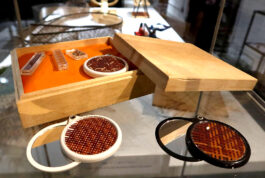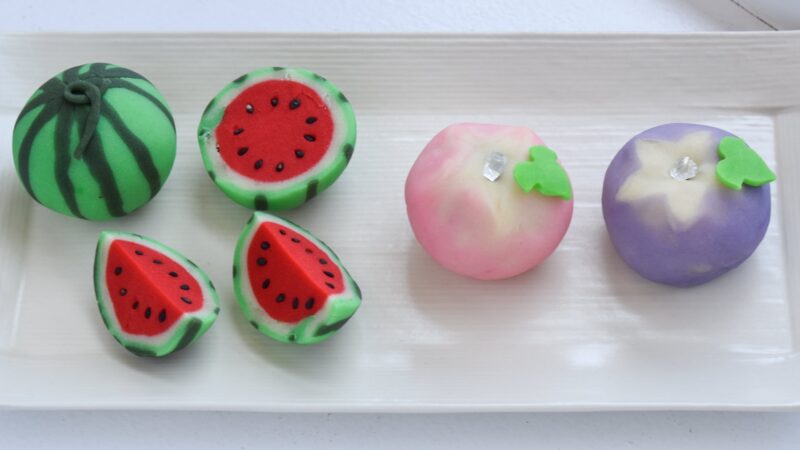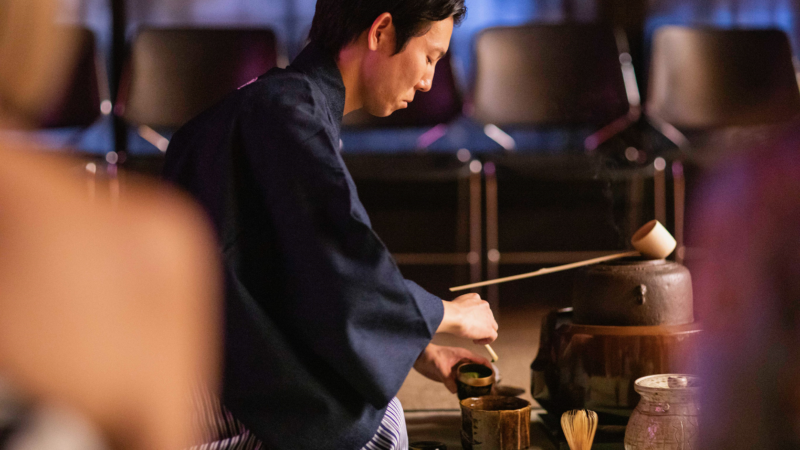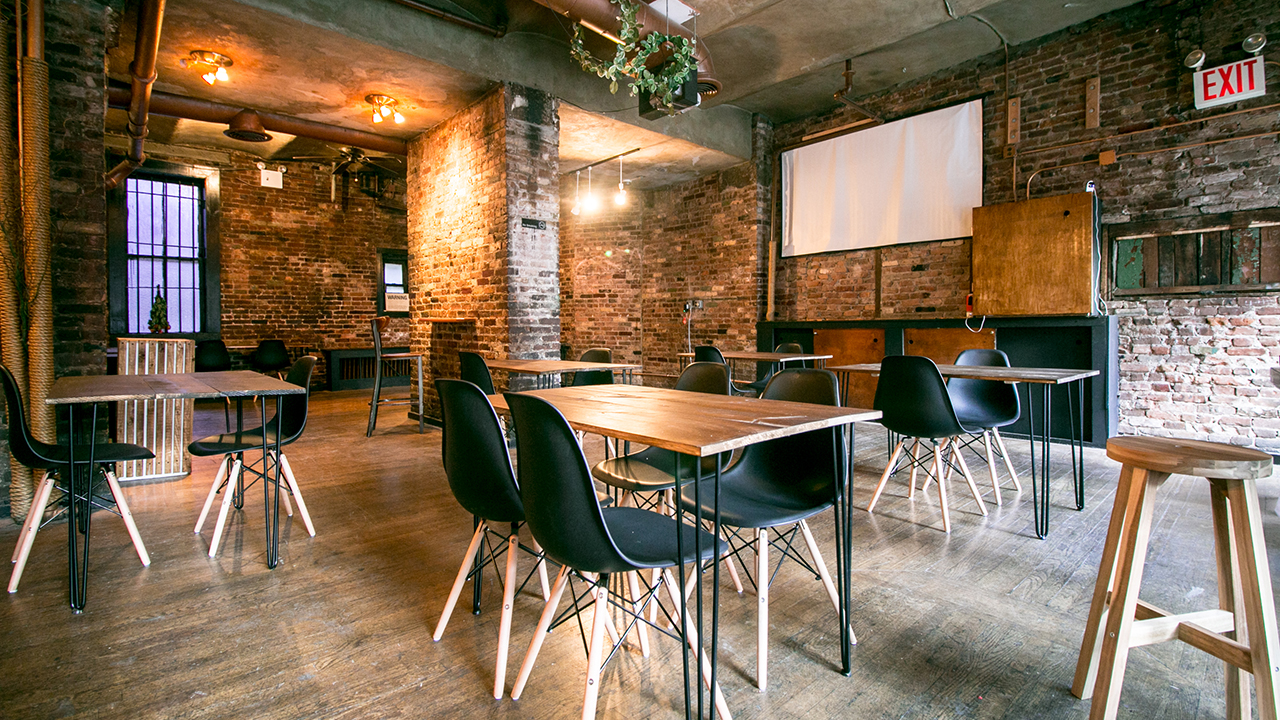RESOBOX organized “The Versatility of Bamboo in Artisanal Crafts,” a solo exhibition of bamboo artist Chikara Kojima of Oita Prefecture at “J-COLLABO” (Brooklyn, New York, USA) from December 17, 2021 until January 16, 2022.

Fifteen works, including small items such as mirrors and accessories with beautiful bamboo decorations, and larger items adorned with beautiful bamboo weave, were exhibited in the white cube art gallery. New Yorkers who visited the gallery were invited into the world of “Japan.”

The “Bamboo Steering Wheel” is, as the name suggests, a steering wheel that can actually be attached to a car. Mr. Kojima says, “I find hints for making things in my daily life.” He came up with the idea of making the steering wheel, the focal point of a car’s dashboard, using the characteristics of Oita’s beautifully colored bamboo. The knots in the bamboo become an accent in the design of this creative work.

For the “Oita Madake and Tochigi Leather Business Card Holder,” Mr. Kojima personally went to a bamboo grove in Oita to cut each piece of madake bamboo himself. He processed each piece by hand to make it as thin as possible, creating a delicate weave pattern. Some of the bamboo is painted or dyed, and together with the high-quality leather from Tochigi Prefecture, the material can be enjoyed as it changes over time. This is a very distinctive and distinguished business card case that has been purchased by many people, especially overseas.
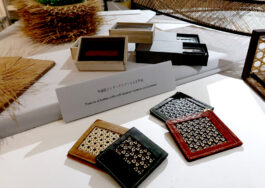
The “God of Fortune x Beppu Bamboo Craft” is a piece created in collaboration with makers of Hakata dolls, a traditional clay craft in Hakata City, Fukuoka Prefecture. It features a bamboo base colored with a unique processing technique to look like wood, a bamboo-weave cushion, a traditional hexagonal bamboo-weave pattern in the background, a colorful bamboo woven ball, and a funky Hakata doll painted by Kojima.

The highlight of this exhibition is that none of the works are completely made of bamboo, but rather a combination of different materials. Many traditional bamboo products are made of bamboo alone. However, all the works in this exhibition blend a variety of materials with traditional bamboo crafting techniques. Mr. Kojima says, “The potential of bamboo is high, and with modern technology, paper, plastic, towels, and toilet paper can be made from bamboo. In addition to the crafting techniques, I am constantly challenging myself to see how far I can bring out the characteristics and appeal of the material.”
Mr. Kojima is also eager to expand overseas, noting, “I want to create a new buzz in the bamboo craft industry and make it more exciting.”
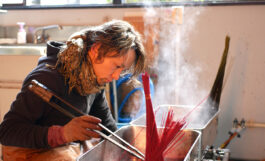
Making efforts to popularize the appeal of bamboo craft in Japan
A Shared Space for Creativity and Growth
In 2018, Mr. Kojima opened an open shared atelier space called “synergiez” in his hometown of Beppu City in Oita Prefecture, working hard to promote the appeal of bamboo craftsmanship. The space has bamboo craft-related equipment and a wide range of modern processing devices such as laser cutting machines and 3D printers. The space is open to anyone who wants to get in touch with traditional crafts or try to make things by themselves. It became a place for local people to work and interact.
“The appeal of bamboo is the depth of its potential as a material and the beauty of the material itself. I want to continue to create things that people can enjoy,” says Mr. Kojima. We are looking forward to supporting his creative endeavors in the future.
At “synergiez,” you can try bamboo crafting by making a reservation in advance. If you find yourself in the area, check it out and experience the wonders of bamboo for yourself!
